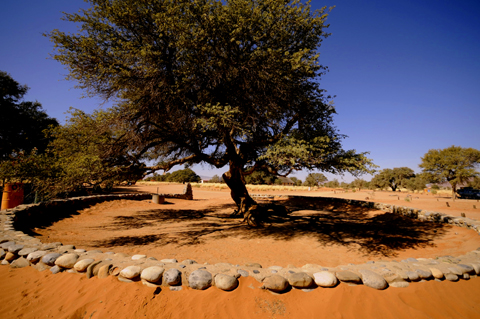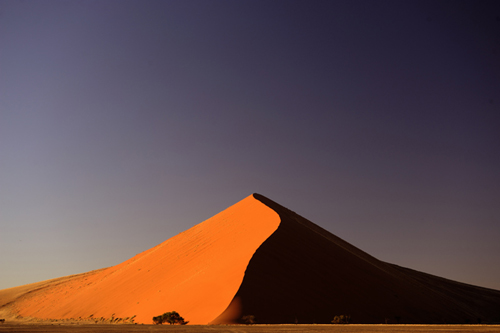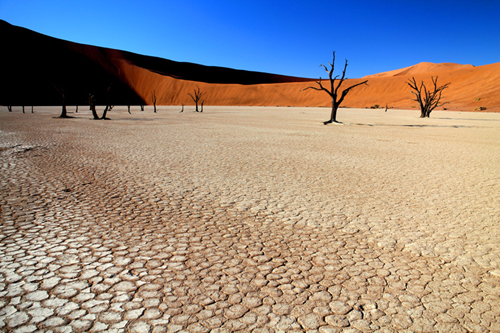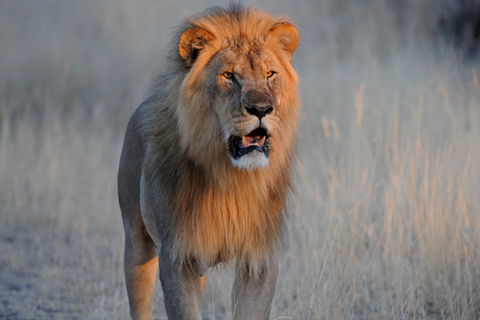
Sossusvlei Sesriem
places to stay
Need a place to stay to visit Sossusvlei here are your options ...
Read More

The mighty Namib Desert maybe Namibia's most popular tourist destination and for good reason, the raw beauty of this enormous desert covering a vast area of the country is stunningly beautiful and really worth visiting.
So how do you get the most out of your visit to Sossusvlei and the surrounding desert? Where are all the best views of Sossusvlei ? How do I get to them and where should I stay?
All good questions, read on to for explanations and maps to help answer all these questions and prepare you for the best desert experience.
The Namib Desert is in the southwest of Namibia and Sossusvlei is a large pan where the Tsauchab River flows to in heavy rainy seasons (a very rare occasion) it has created a route into the Namob Desert where you can climb some big sanddunes.

Here is a map showing where the main attractions are in the Namib Desert, Sesriem, Sossusvlei, Deadvlei, Dune 45, Elim Dune, Sunset Dune and Sesriem Canyon

Moving in closer lets explain how to get into the Namib Naukluft Park and how the park gates work
 Park and Desert entrances
Park and Desert entrances
This is the entrance into the park either from the C27 from the south or the D826, the entrance is right on the corner of theses two roads.
1. Entrance into Park This is the main gate into the Namib Naukluft
National Park, it opens at dawn and closes at dusk. From here you have
access to the Parks office (where you pay for your park permit), Sesriem
Camp Site, Sesriem Oshana Camping,
Sossus Dune Lodge, Dead
Valley Lodge and Sesriem Canyon.
2. Entrance into the desert
This gate opens 1 hour before dawn and closes 30 minutes after sunset and you are only allowed through the gate if you have purchased a permit from the parks office.

 Dune 45 - This remarkable wandering dune is 45km from Sesriem, hence the name Dune 45.
Dune 45 - This remarkable wandering dune is 45km from Sesriem, hence the name Dune 45.
 Dune 45 is 85 metres high but what makes it very distinctive is that it stands out from the main desert almost separate showing off its beautiful elegant shape.
It is a very photographic and often has the wind whipping across the top creating beautiful images making it well worth the stop on the way back from Sossusvlei or even an option for sunrise.
Dune 45 is 85 metres high but what makes it very distinctive is that it stands out from the main desert almost separate showing off its beautiful elegant shape.
It is a very photographic and often has the wind whipping across the top creating beautiful images making it well worth the stop on the way back from Sossusvlei or even an option for sunrise.
 Sossusvlei - Continuing along the tar road its another 20kms then its the end of the tar road and there is a parking area for 2 wheel drive vehicles. There is a service (you have to pay) where a NWR 4x4 will transport you the next 5km through the deep sand right into the heart of Sossusvlei or you can choose to walk (make sure you have a hat and water with you), or if you have a 4x4 and know how to drive it in sand you can drive yourself the last 5km.
Sossusvlei - Continuing along the tar road its another 20kms then its the end of the tar road and there is a parking area for 2 wheel drive vehicles. There is a service (you have to pay) where a NWR 4x4 will transport you the next 5km through the deep sand right into the heart of Sossusvlei or you can choose to walk (make sure you have a hat and water with you), or if you have a 4x4 and know how to drive it in sand you can drive yourself the last 5km.

Sossusvlei is a large dry white salt pan surrounded by towering red dunes that reach up to 400 metres above sea level, making them the highest (not tallest) sand dunes in the world. Sossusvlei means 'dead end marsh' because it is where the Tsauchab River meets its match when it does flow and gathers in a shallow lake barred from any further progress towards the sea by the large dunes that block its path. Water only runs this far into the desert every 8 years or so when there is enough rain far inland to flood this far.
 This area of flat white crusted desert and surrounding dunes make some of the most photogenic desert scenery you will ever witness.
Te best time to visit, both for good photos and the best experience is at dawn to experience the first light flooding over the sand dunes, watch the changing colours and chase the shadows as the sun rises high into the clear blue sky, feel the temperature go from cold to cool to warm then hot then blistering!
You can also go late afternoon to experience the lowering sun but you cannot watch sunset at Sossusvlei as you have to leave the park before sunset and Sossusvlei is a 69km from the entrance gate!
This area of flat white crusted desert and surrounding dunes make some of the most photogenic desert scenery you will ever witness.
Te best time to visit, both for good photos and the best experience is at dawn to experience the first light flooding over the sand dunes, watch the changing colours and chase the shadows as the sun rises high into the clear blue sky, feel the temperature go from cold to cool to warm then hot then blistering!
You can also go late afternoon to experience the lowering sun but you cannot watch sunset at Sossusvlei as you have to leave the park before sunset and Sossusvlei is a 69km from the entrance gate!
 Deadvlei - 1 km into the desert from Sossusvlei is this amazing flat, open, white, salt crusted area dotted with dry preserved tree remains that are 900 years old, the arid dry, hot climate has preserved them like statues of nature.
It makes for surreal photos as the stark dark trees contrast with the white ground, red dunes and blue, blue sky, a photographer can spend hours here.
Deadvlei - 1 km into the desert from Sossusvlei is this amazing flat, open, white, salt crusted area dotted with dry preserved tree remains that are 900 years old, the arid dry, hot climate has preserved them like statues of nature.
It makes for surreal photos as the stark dark trees contrast with the white ground, red dunes and blue, blue sky, a photographer can spend hours here.
It is a hot shadeless walk from Sossusvlei to Deadvlei so take a hat and water as well as all that camera equipment!
 Back at Sesriem close to the camps is Elim Dune - Located just 5km north of the Sesriem entrance Elim Dune often referred to as Sunset Dune is a red dune that can be reached by a 2wd vehicle or even makes a pleasant early morning/afternoon stroll from the Sesriem camp site.
It is not a big dune but is an excellent place to sit and absorb the surrounding beauty and enjoy sunset.
Back at Sesriem close to the camps is Elim Dune - Located just 5km north of the Sesriem entrance Elim Dune often referred to as Sunset Dune is a red dune that can be reached by a 2wd vehicle or even makes a pleasant early morning/afternoon stroll from the Sesriem camp site.
It is not a big dune but is an excellent place to sit and absorb the surrounding beauty and enjoy sunset.

Sesriem Canyon - Carved out of the desert floor millions of years ago by the Tsauchab River Sesriem Canyon is a natural gorge that still floods with water after good rains, it is up to 30 metres deep in places and 1km long.
Its name Sesreim comes from when the early trekkers who were making their way north had to tie six (ses) belt lengths (riem) of hide together to reach the waters below to get the fresh cool waters that hide in the shade at the canyons bottom.
 Sesriem Canyon is a great place to explore as there is plenty shade of through the canyon keeping temperatures pleasant, note though it can still get very hot in the canyon around midday, so early morning or late afternoon is the best time to explore the fascinating layers of rock carved out by years of flowing water.
Sesriem Canyon is a great place to explore as there is plenty shade of through the canyon keeping temperatures pleasant, note though it can still get very hot in the canyon around midday, so early morning or late afternoon is the best time to explore the fascinating layers of rock carved out by years of flowing water.
There are plenty photographic opportunities as the light shines into the canyon and at some times of the year there are pools of water sill in the canyon filled with seasonal barbells!
Sesriem Canyon is about a 10 minute drive from Sesriem entrance and will only take about an hour for a leisurely exploration, please be aware there is no solid path into the canyon and the ground can be quite slippery with loose rocks and sand so wear decent shoes and proceed with caution.


Need a place to stay to visit Sossusvlei here are your options ...
Read More

Heading to Etosha? Find a great place to stay
Read More

Need a place to stay in Fish River Canyon?
Read More